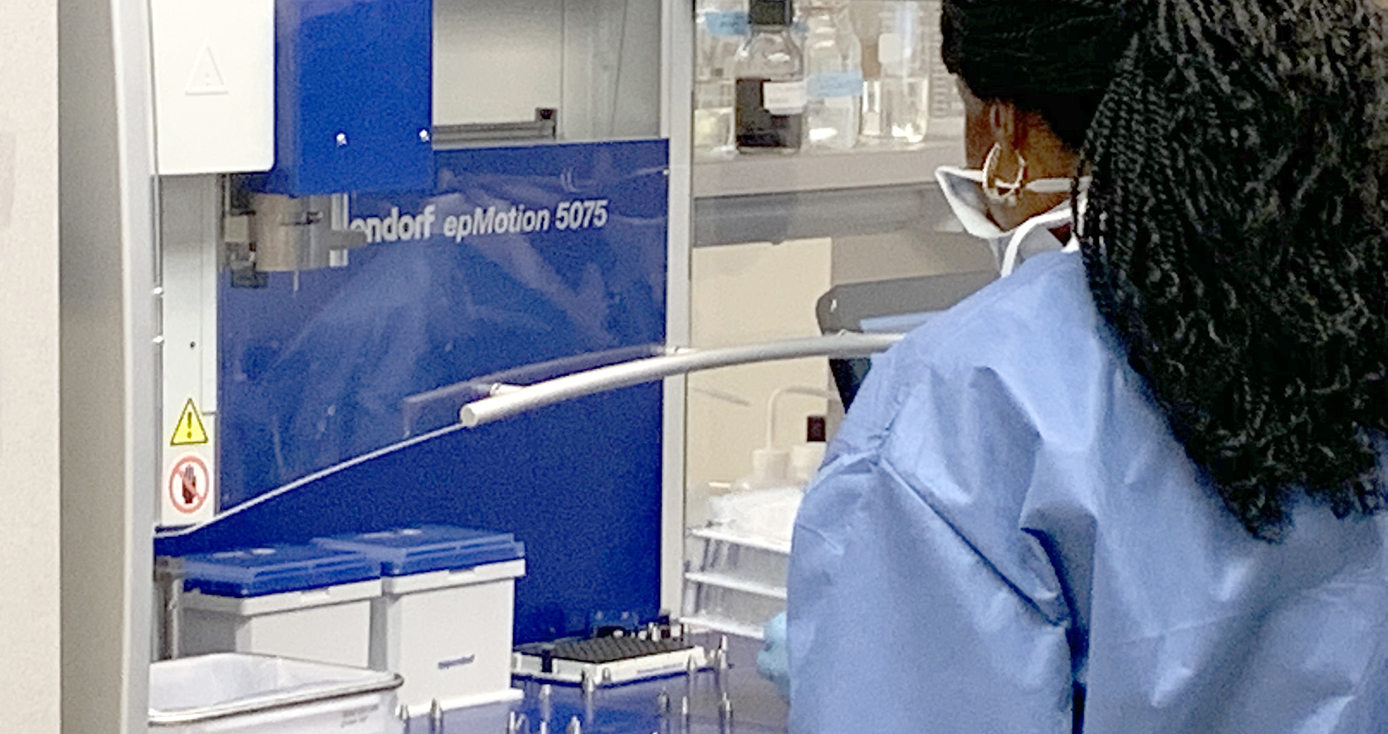
Subscribe to Pittwire Today
Get the most interesting and important stories from the University of Pittsburgh.Where Does Your Swab Go After Surveillance Testing?
Ever wonder what happens to the COVID-19 swab after surveillance testing?
At Pitt, Lee Harrison’s lab plays a major role. For starters, the Microbial Genomic Epidemiology Lab (MiGEL) pools portions of each specimen from surveillance testing of asymptomatic Pitt students. Pooling works by combining parts of multiple samples into one batch, then sending the batch to a lab certified for COVID-19 testing.
Harrison explained: If a pool comes back negative, no further action is needed. If a pool comes back positive, the remaining part of each specimen is sent for testing separately to determine which individuals are positive.
“Pooling is a great way to expand testing capacity, especially in low prevalence situations,” said Harrison, a professor of medicine and associate chief of epidemiology and education in Pitt’s Division of Infectious Diseases in the Department of Medicine. “The reason that MiGEL is involved is because we have a robot liquid handler, called epMotion, that automates the otherwise very tedious pooling process.”
Alan Wells, professor of pathology and bioengineering at Pitt and medical director of the UPMC Clinical Laboratories, added, “The MiGEL strikes a complex balance between sensitivity and expansion in a new manner that required authorization from the FDA for clinical testing.”
Thanks to pooling, Pitt has been able to essentially quadruple its testing efficiency. To date, 4,193 randomly selected, asymptomatic Pitt students have been tested in surveillance testing since it began on Aug. 12, 2020. Sixteen of those tests to date have come back positive, resulting in a 0.38% virus prevalence rate on the Pittsburgh campus. By randomly testing roughly 10 percent of the campus population throughout the term, the University is able to monitor and hopefully contain the spread of COVID-19 on and off campus. (See more on Pitt’s COVID-19 Dashboard.)
And Harrison, who also chairs the Allegheny County Health Department’s Board of Health, has plans for his lab to further investigate how cases of how COVID-19 might develop on Pitt’s campuses, even among a population with limited cases.
Over the past several years, MiGEL has been doing whole genome sequencing on bacteria, which, when coupled with machine learning and e-health record data mining, can identify undetected outbreaks of serious infections in hospital settings. Now, MiGEL is expanding the project to include respiratory viruses—including SARS-CoV-2—using specimens from both symptomatic and asymptomatic testing at Pitt. The goal is to better understand viral transmission in a site-specific way.
Harrison said there are several universities that do SARS-CoV-2 whole genome sequencing, but it’s not clear how many will be sequencing their student specimens. “I’m fairly certain there will be some.”
Even though the Harrison lab has used the epMotion robot for several years in National Institutes of Health funded applied research, “it took a monumental effort by Dr. Jane Marsh who is the director of my lab, and the rest of our lab team to gear up to do the pooling,” Harrison said.
“The special tube racks we needed were out of stock, so we asked the Pitt Machine Shop, which really stepped up to the plate, to rapidly make around 50 racks for us. We also had to scramble to find all of the different types of tubes in the middle of the pandemic with all of the associated supply shortages, get the epMotion reprogrammed to run the pooling protocol and make sure we had the right biosafety protocols in place before starting. We got ready just in time for the return of the students.”
Harrison thinks we may eventually have a vaccine that provides a robust immune response to COVID-19, “but the proof will be in the results of the ongoing phase 3 clinical trials.”
Until then, it’s all about teams like his doing the testing—and everyone doing their part to mitigate the virus’ spread: Wear a face covering, wash your hands for 20 seconds and maintain physical distance of at least six feet.



